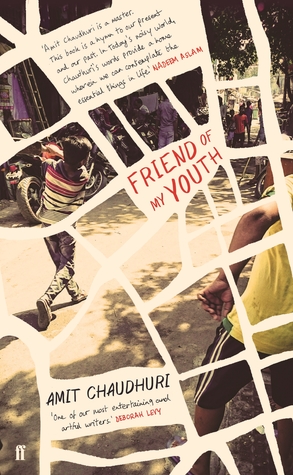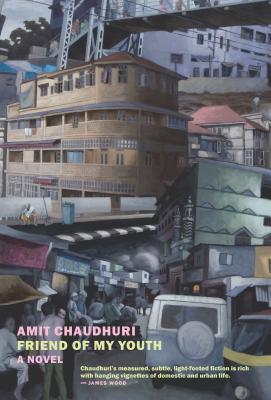The seismic shocks of May divided life and the landscape into a before and after. The before was the object of memory, stories unceasingly layered and blown over by words. One argued over the form of the cliffs, the course of the brooks, the trees that avalanches rolled over. About the whereabouts of objects, the order of things in the house, the fate of animals. Each of these arguments was an attempt at orientation, at carving a path through the rubble of masonry, mortar, split beams and shattered dishes, to understand the world anew. To begin living in a place anew. With one’s memories.
On May 6, 1976, just before 9:00 pm, a devastating earthquake tore through the Friuli district of northeastern Italy. Several strong quakes followed in September. Bordered, today, by Slovenia to the east and Austria to the north, this region which extends from the slopes and foothills of the Carnic Alps, onto the flat flood plain of the River Tagliamento, would be forever changed, as would the lives and memories of those who survived that year of death and destruction. Rombo, the latest novel by German poet and writer Esther Kinsky, places this event at its centre and turns its attention to the rich and deeply interwoven stories that bind the land and its inhabitants together.
 As her novels River and Grove demonstrate, Kinsky is deeply sensitive to and observant of landscapes, urban and rural; her narratives move through environments that are simultaneously emotional and physical—spaces of memory, grief and reconciliation. The same can be said of Rombo, but here, instead of a peripatetic first person narrator tracing a deeply personal journey, a chorus of voices carry the flow of a unique, multi-layered narrative that encompasses the human and non-human, the animate and inanimate alike. The text is divided into seven sections, each opening with a quote from a classic geological work and a coarse black and white illustration depicting a fragment of the remaining frescos from the cathedral at Venzone. A neutral narrative voice describes the landscape and its history—present and past—offering observations of a geological, ecological, folkloric and scientific nature. Woven into this tapestry are the memories and stories of seven men and women—Anselmo, Olga, Mara, Lina, Gigi, Toni and Silvia—who were children or youth at the time of the earthquake, and whose reflections take them back to the events that forever divided their world into before and after.
As her novels River and Grove demonstrate, Kinsky is deeply sensitive to and observant of landscapes, urban and rural; her narratives move through environments that are simultaneously emotional and physical—spaces of memory, grief and reconciliation. The same can be said of Rombo, but here, instead of a peripatetic first person narrator tracing a deeply personal journey, a chorus of voices carry the flow of a unique, multi-layered narrative that encompasses the human and non-human, the animate and inanimate alike. The text is divided into seven sections, each opening with a quote from a classic geological work and a coarse black and white illustration depicting a fragment of the remaining frescos from the cathedral at Venzone. A neutral narrative voice describes the landscape and its history—present and past—offering observations of a geological, ecological, folkloric and scientific nature. Woven into this tapestry are the memories and stories of seven men and women—Anselmo, Olga, Mara, Lina, Gigi, Toni and Silvia—who were children or youth at the time of the earthquake, and whose reflections take them back to the events that forever divided their world into before and after.
This choral narrative flows and swirls like a river, rising and falling, turning in eddies, joined by streams and tributaries along the way. Moving back and forward in time, repetition, contradiction and fractured accounts are gradually woven together to create a rich, if heartbreaking, whole. In the beginning we are briefly introduced to the seven survivors, from a third person perspective, on May 6 and in the present, decades later. Then, the dynamics of the seismic event are set up, the unevenness of the impending disruption are alluded to, and the forces of the earth are unleashed:
It is said that animals are much quicker to sense the vibrations that gradually build up in the Earth’s interior and eventually exceed the stress limit in the spreading centre, causing the tectonic plates to snag and tip, irrevocably shifting the order of hollow cavities and mass, the order of emptiness and fullness.
For each one of the survivors, the hours leading up to the May earthquake were marked by unusual observations—an unexpected sighting of a snake, anxious goats, loudly barking dogs, fitfully chirping birds. The day was unseasonably hot, the light oddly filtered. And everyone remembers the otherworldly sound, il rombo, rising out of the ground just before it started to shake. In the moment, they are pushed out of their houses, stand under archways or find themselves crawling out from under collapsed structures. Damage is extensive but, all things considered, their village is one of the lucky ones. Others are almost completely destroyed.
After our first glimpse of that fateful day, the survivors begin to speak for themselves. They talk of their memories of life in the valley, their families, and their later adult years. But mostly they speak of the earthquake and its immediate aftermath—the strange, dislocated summer of freedom for the school-aged children, the stress of rebuilding and rising tensions among the adults and, amid the turmoil, the accommodation of marriages and deaths and the business of life. Then, when things are beginning to promise a return to some degree of normal, the severe September shocks roll through. Everything is unsettled again.
The lives and stories of some of the characters intersect, contradict one another or offer different angles on the same situations or experiences. Their individual histories reflect the historical and economic realities of the region. Fractured, multi-generational families are common as people are forced to leave to search for work, or driven back again by the need for the support of extended family. Anselmo and Olga, for instance, were both born abroad, in Germany and Venezuela respectively. They come to the valley with their locally born fathers after divorce or widowhood finds them stranded in foreign lands and brings them home. Some couples comfortably fall into a pattern of living in different towns or countries, like Silvia’s parents or Lina and her husband. After the earthquake, many will leave the region for good, having lost their jobs and their homes, but for the seven villagers featured here, including those who do leave for a time and return, the valley is and always will be home. As Lina says about the land and her place in it:
The soil is poor here. Limestone ground, the ground of poverty. The flowers are paler here than elsewhere. The winter is long. But winter is alright by us, because it brings snow and whatever grows around here has snow and goat shit to thank for it. The snow saturates the ground differently than the rain does, they always say. On the other side of the mountain, in the south, it only rains, even in winter no snow falls. It’s God’s pisser, the people say.
What is my life? sometimes I ask myself. My life is this place. Here I know everything. Every stick and every stone. The animals and the people. I write down what I want to remember. The weather, the harvest, the comings and goings, misfortunes. Surprises.
As these witnesses, now looking back through the filter of more than half a lifetime’s experience, recall the upheaval of the earthquake and talk about their lives before and since, their reminisces are framed and reframed through the shifting sedimentary layers of accumulated memory. Just like the land around them. Unfolding with an uneven, yet natural pace, the flow of personal stories, woven among the descriptive passages, observations and anecdotes, lends a filmic documentary-like feel to the novel, successfully achieving a Sebaldian balance of truths and fictions imbued with Kinsky’s distinctly meditative poetics. The result is an unusual and highly affecting form of storytelling that follows its own narrative logic.
Rombo: A Novel by Esther Kinsky is translated from the German by Caroline Schmidt and published by New York Review Books in North America and Fitzcarraldo in the UK.







